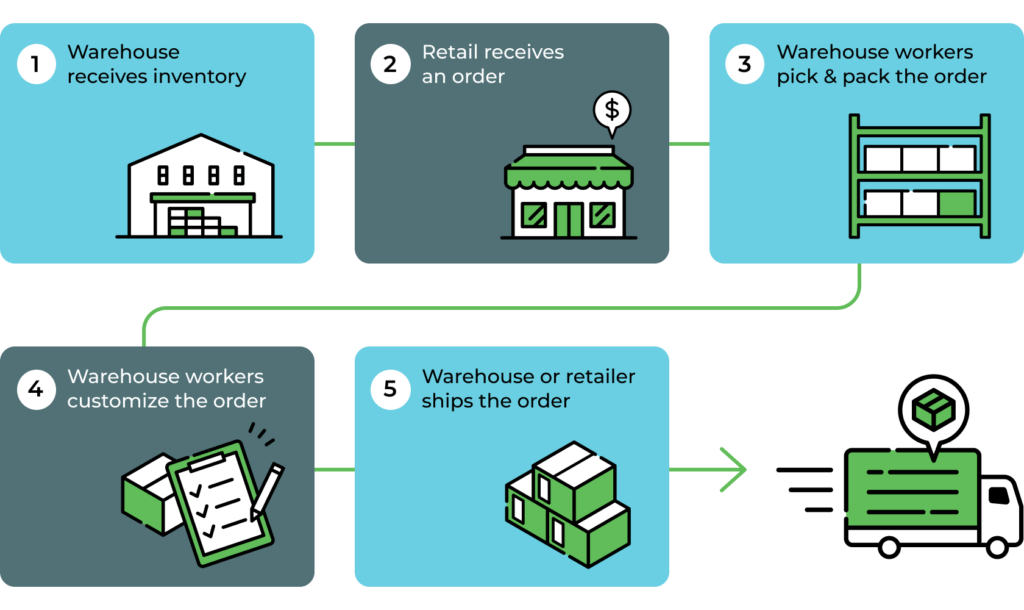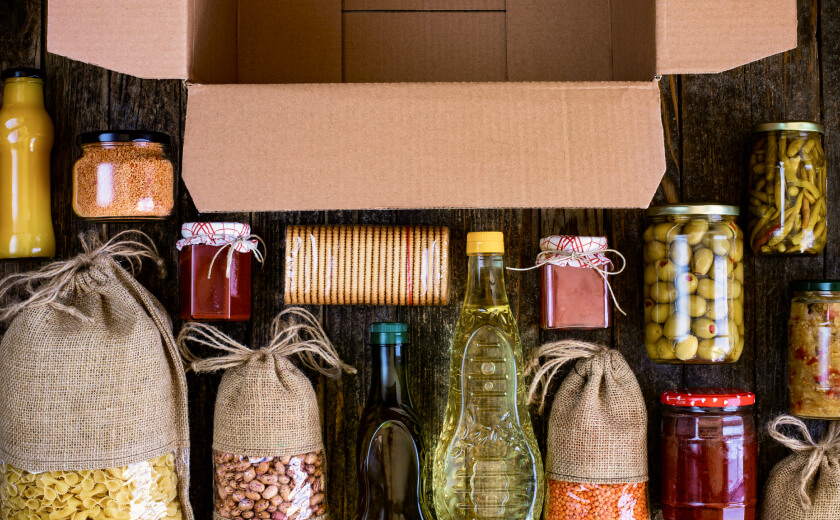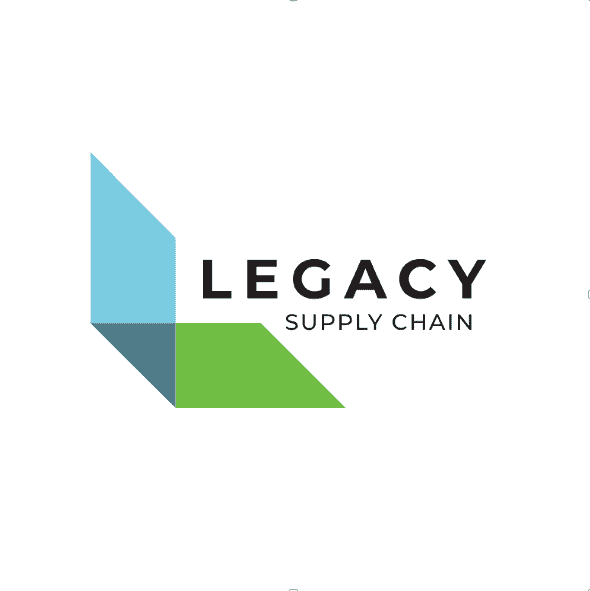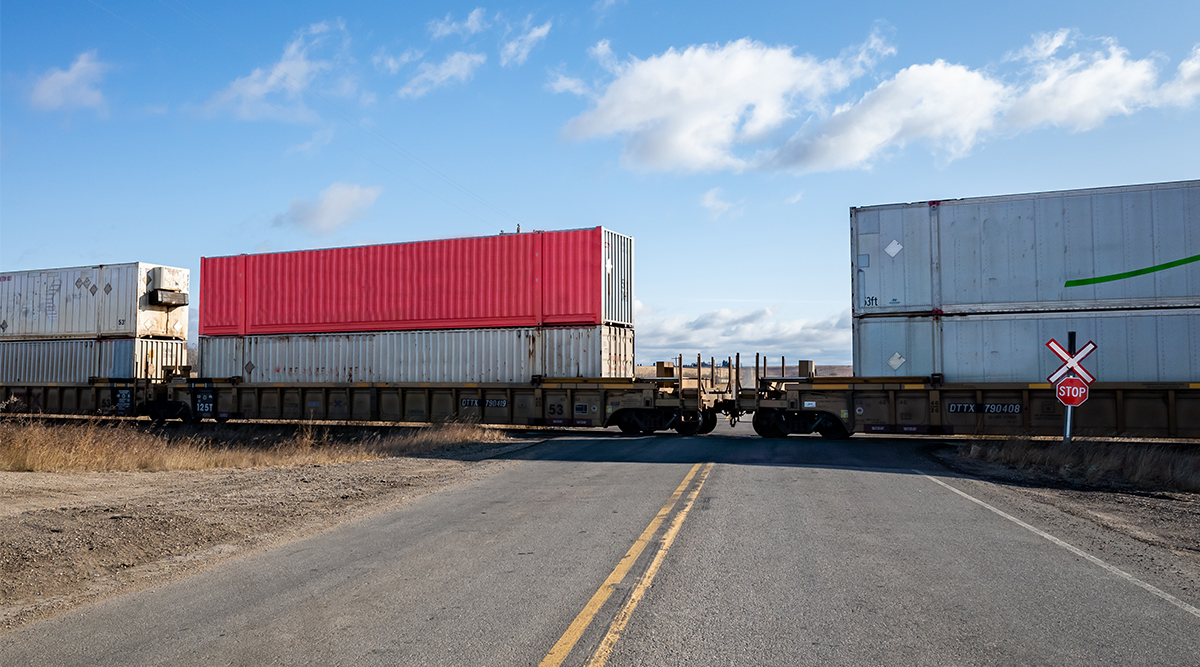Your Complete Guide to Subscription Box Fulfillment
In the age of eCommerce, the word “subscription” means a lot more than a monthly delivery of Smithsonian magazine. There’s a subscription service for nearly every type of product on the market — clothes, movies, books, wine, coffee, makeup, meals, science kits, even novelty socks and underwear — proving that this is indeed a lucrative offering for a wide range of consumer demographics. In fact, 27% of Americans who shop online have at least one retail subscription, and will generate nearly $23 billion by the end of 2023.
Marketing and selling subscriptions may seem straightforward, but subscription box fulfillment presents its own set of challenges. This is why it’s imperative to develop and adhere to an airtight logistics framework that will meet consumer demand, uphold brand consistency and reinforce customer loyalty.
- What Is Subscription Box Fulfillment?
- The Three Types of Subscription Boxes
- Subscription Box Basics
- How Subscription Box Fulfillment Works
- Common Challenges with Subscription Fulfillment
- The Value of Third-party Subscription Box Fulfillment
- When to Outsource Subscription Fulfillment
- What to Look for in a Subscription Fulfillment Partner
What Is Subscription Box Fulfillment?
A retail subscription is a recurring order sent automatically to customers on a regular, preset schedule. This is an ideal model for direct-to-consumer brands, which typically maintain a digital-only presence, as subscriptions guarantee a reliable revenue stream from customers who like to plan ahead.
Subscription box fulfillment is the process of receiving, packing and shipping subscription orders while adhering to the retailer’s brand standards and customer preferences. To fulfill these regular orders and meet customers’ expectations, retail subscription companies need to master meticulous inventory management, logistical efficiency, and stringent quality control.
The primary challenges of subscription box fulfillment arise from the need to ship orders according to each customer’s unique preferences and timeline; businesses must also factor in these recurring shipments when determining optimal inventory levels.
The Three Types of Subscription Boxes
Subscription services meet a range of customer needs, from restocking essential household items to discovering new products. There are three main types of subscription services offered by many eCommerce companies:
- Replenishment Subscription (Auto-Ship): This type of subscription serves the same purpose as a regular trip to the supermarket or department store. It ensures customers stay stocked with household essentials such as coffee beans, pet food, diapers and other frequent consumables. With auto-ship, companies are guaranteed repeat business; timely and accurate deliveries also reduce competition, since customers don’t have to think about where they’re getting their next pack of toilet paper.
- Subscribe and Save: In this model, customers pay a monthly or yearly membership fee for access to discounts and special deals. Amazon Prime is an example of a subscribe and save membership, since members can receive free shipping and discounts on thousands of products. This is also an attractive perk of many replenishment subscriptions.
- Curated Subscription Boxes: This model can fulfill both essential and “just-for-fun” items. While customers generally know what type of product they’re getting, the exact contents of each shipment remain a mystery until delivery day. Curated subscription services include those for clothing, meal kits, kids’ activities, books, makeup, wine and more. Specific offerings vary based on availability, price, season or theme, with the goal of helping customers discover new products and securing repeat business.
Subscription Box Basics
In addition to different types of subscription services, there are also differences in the cadence and contents of each model. Each of these factors impacts the logistical requirements of the subscription box fulfillment process.
- Order Frequency: Subscription services vary in how frequently orders are shipped, with options for monthly, bi-monthly or less frequent, customized delivery dates. Companies will either determine preset shipping schedules or provide customers the option of choosing their preferred frequency.
- Shipping Dates: Depending on their logistical capabilities, companies will either choose to ship orders according to each subscriber’s start date, or ship all orders simultaneously on a predetermined basis. Since customers generally gravitate toward personalized services, a staggered shipping model tends to be more attractive.
- Order Contents: While curated subscription boxes are usually a surprise to the recipient, all subscribers tend to receive a uniform order, which helps companies manage their inventory. Replenishment subscriptions are typically much more customized, since customers have the option to edit the quantity, size, style or brand of their regular order’s contents.
How Subscription Box Fulfillment Works
While there may be some variations between retailers, the standard subscription box fulfillment process ensures that customers receive accurate shipments in a timely manner. The process follows the same basic steps:

- The warehouse receives the inventory: All of the products that will be included in the subscription boxes are delivered to the warehouse. Inventory management systems help track stock levels and ensure that there are enough items to fulfill upcoming orders.
- The retailer receives an order: When a customer places a subscription order, the sales system generates a warehouse request for the required items. The order includes information on the specific products, quantity and any customization preferences chosen by the customer.
- Warehouse workers pick and pack the order: Warehouse workers then pick the items from warehouse shelves based on the details of the order. Once the items are gathered, they are carefully packed into the subscription box, ensuring that everything is in good condition.
- Warehouse workers customize the order: For subscription boxes that allow customization, warehouse workers may engage in additional steps to tailor the contents. This could involve adding personalized items, adjusting quantities or incorporating any unique preferences specified by the customer.
- The warehouse or retailer ships the order: After the order is picked, packed and customized (if applicable), it is ready for shipping. Shipping methods and carriers are selected based on factors such as delivery speed, cost and the geographic location of the customer. Tracking information is often provided to customers so they can monitor the status of their shipment.
Common Challenges with In-house Subscription Box Fulfillment
When retailers choose to handle subscription box fulfillment in-house — that is, choosing not to outsource fulfillment to a third-party logistics provider — they may face a handful of common challenges:
- Inventory management: Without the right technology, staff or expertise, it can be challenging to accurately keep track of inventory levels and ensure that the right quantity of each item is available. Inaccuracies in inventory management can lead to stockouts, delays in fulfilling orders and customer dissatisfaction.
- Changing products: Introducing new products or making changes to existing ones can make it difficult to update systems and processes in a timely manner. Changes may result in confusion during order fulfillment, leading to incorrect items in subscription boxes.
- On-time delivery: Meeting scheduled shipment dates is crucial for customer satisfaction, and factors such as transportation delays or high order volumes can affect timely delivery (and even the quality of the products, such as perishable food items). Late deliveries can lead to customer frustration, negative reviews and a potential decline in customer retention.
- Quality control: Maintaining the quality of products in subscription boxes is essential for customer satisfaction. Issues with product quality, such as damaged items or defects, can result in returns, additional costs and harm to the brand’s reputation.
- Subscription cancellations: Customer cancellations are inevitable, but frequent errors or delayed shipments due to poor fulfillment practices can trigger high cancellation rates. If process errors don’t seem to be the problem, it’s crucial that retailers understand why customers cancel so they can make the right improvements.
- Staffing: Warehouse staff must be able to handle fluctuations in order volumes and to execute accurate and efficient order fulfillment. Inadequate staffing levels or insufficient training can lead to errors in order processing and impact overall operational efficiency.
Addressing these challenges requires a combination of robust systems (both technological and process-based), effective communication and continuous improvement efforts.
The Value of Third-Party Subscription Box Fulfillment
One way eCommerce retailers can mitigate subscription box fulfillment challenges is by partnering with a third-party logistics (3PL) provider. In doing so, retailers benefit from operational flexibility, streamline costs and gain access to expertise and technology that enhance the overall efficiency and success of their fulfillment processes. Benefits can include:
- Scalability: 3PL providers offer the flexibility to adapt quickly to changes in demand. As business grows or seasonal demand fluctuates, a 3PL provider can adjust their resources and space availability, ensuring efficient operations without the need for significant upfront investment on the retailer’s part.
- Flexible warehousing space: 3PL providers can scale their warehouse space up or down based on clients’ inventory needs, providing cost-effective solutions without requiring a commitment to long-term leases or the burden of managing additional space.
- Optimized inventory management: Using advanced and predictive technology, 3PL providers offer precise inventory management that rivals even the most meticulous retailer. Real-time tracking and automation tools help optimize stock levels, reducing the risk of stockouts or excess inventory. This results in improved accuracy and more efficient order fulfillment.
- Seamless integrations: 3PL providers’ technology stacks can integrate with various eCommerce platforms and marketplaces. This ensures seamless data flow, reducing errors and enhancing customer satisfaction with accurate order fulfillment across multiple channels.
- Access to advanced technology and reliable staff: By partnering with a 3PL provider, subscription box retailers gain access to the latest logistics technology and experienced personnel. Logistics experts invest in cutting-edge technology, automation and intensive training programs, ensuring the use of best practices for efficient and error-free order fulfillment.
- Access to additional services: 3PL providers often offer additional services beyond standard warehousing and shipping. Services such as kitting (combining multiple products into one package) and returns management contribute to a comprehensive and streamlined fulfillment process, enhancing the overall customer experience.
- Strong carrier relationships: Experienced 3PL providers have established relationships with reliable carriers and can leverage these relationships to ensure cost-effective and efficient shipping solutions.
- Faster delivery times: With their optimized logistics networks, proximity to shipping hubs, efficient routing and strong carrier relationships, 3PLs can achieve faster delivery times, meeting or exceeding customer expectations for on-time delivery.
When to Outsource Subscription Fulfillment
Say, for instance, you’re a subscription box retailer who has yet to make the switch to outsourcing order fulfillment. If any of the following scenarios apply to you, it may be time to outsource to a third party:
- Complex subscription offerings: For any number of reasons, your subscription box offerings may have become exceedingly complicated to fulfill. Fortunately, 3PL providers specialize in diverse subscription box fulfillment services, regularly handling complexities such as customized packaging, kitting and personalized fulfillment with precision and efficiency.
- High order volumes: While a significant increase in order volumes is seemingly a good thing for your bottom line, it may be too challenging to successfully handle in-house. 3PL providers are adept at scaling their operations quickly, which enables them to manage large order volumes efficiently and ensure timely order fulfillment without overburdening your own in-house resources.
- Limited warehousing space: If you’ve outgrown your current storage facilities, partnering with a 3PL provider opens up flexible warehousing solutions, allowing you to expand or contract storage space based on your inventory needs without the constraints of fixed leases.
- Geographic expansion: Thanks to strategically located warehouses and fulfillment centers, 3PL partnerships can allow you to expand your subscription box service to reach a broader geographic area. A broad warehousing network facilitates faster and more cost-effective shipping to a wider customer base, enhancing your reach, brand recognition and customer satisfaction.
- Operational streamlining initiatives: If you’re looking to streamline your fulfillment operations, reduce errors and improve order accuracy, 3PL providers can leverage advanced technology and expertise to enhance accuracy, reduce errors and improve overall operational efficiency.
- Lack of expertise/resources: If you’re experiencing resource constraints — including a shortage of experienced staff — the right 3PL partner can help fill in the knowledge and resource gaps.
- Seasonal or fluctuating demand: If the nature of your business requires flexible and scalable fulfillment solutions, you don’t have to go it alone. 3PL providers enable you to adapt to changing demand levels, ensuring that their resources are aligned with your business needs throughout the year.
- A need to focus on core business activities: Outsourcing fulfillment to a 3PL enables you to spend less of your energy on logistics and apply more of your existing resources to core business activities such as marketing, product development and customer relationship management.
In any of these scenarios, outsourcing to a 3PL provider can provide you with the expertise, flexibility and efficiency you need to navigate the various challenges inherent in the subscription fulfillment process and, ultimately, enhance your overall business performance.
What to Look for in a Subscription Fulfillment Partner
If you’re in the market for a third-party subscription fulfillment partner, you’ll want to look for a number of qualities that signal a successful logistics relationship. Vet potential 3PL providers based on the following criteria:
- Proven experience: How long have they been in the business? More specifically, how long have they been working with companies in your industry?
- Scalability: Can they accommodate business growth? Determine whether a potential 3PL provider can meet your company’s current logistics needs as well as your future needs, should you experience fluctuations in demand.
- Competitive costs: If possible, find out whether a potential partner can work with you to optimize costs, such as securing discounted shipping rates or sourcing cost-effective resources. The right partner should help you save money in the long run.
- Industry recognition: What’s their industry reputation? Have they won any awards for their services? Awards aren’t the only thing that matter though — maintaining all the proper licenses and certifications shows their commitment to upholding industry standards.
- High visibility: The best tech-enabled 3PL providers grant their clients end-to-end visibility, enabling retailers to track all shipments and addressing any potential errors immediately.
- Value-added services: Order fulfillment, warehousing and transportation are a given for all 3PL providers — but what else do they offer? Value-added services such as customized packaging and labeling, kitting, assembly and quality control make for exceptional subscription box fulfillment, not to mention meet ever-growing customer expectations.
- Positive culture: While this criterion may seem like a nice-to-have, a 3PL provider’s approach to service often reflects its internal culture. Look for a company that treats its employees well, maintains a customer-first attitude and strives to continuously improve — chances are, they’ll make an excellent long-term logistics partner.
With a service-first approach to eCommerce fulfillment, Legacy Supply Chain utilizes the latest in logistics technology to deliver dynamic support to clients across multiple industries. We provide customized fulfillment services, right-sized warehousing, end-to-end visibility and comprehensive customer support at every step of the fulfillment journey.
For more about our full range of our 3PL capabilities, please visit our Services page or contact us today.
Get Insights. Stay Ahead.
Get the latest news and insights via email on warehouse improvement, transportation optimization, labor strikes and international shipping rate changes.
Popular Posts
Search Posts
-
6 Cornerstones to a Successful 3PL-Customer Relationship
Hiring a third-party logistics (3PL) provider is a strategic approach for businesses to increase their capacity without expanding their...
+ Read more -
Canadian Rail Strike? – What We Know So Far
On May 1st, CN (Canadian National Railway) and CPKC (Canadian Pacific Kansas City) rail workers voted overwhelmingly to authorize a strike...
+ Read more -
2024 Q1 Freight Landscape: Trends, Challenges, and Predictions
As the first quarter of 2024 comes to an end, here are some observations over the past few months as well as predictions about the trucking...
+ Read more










